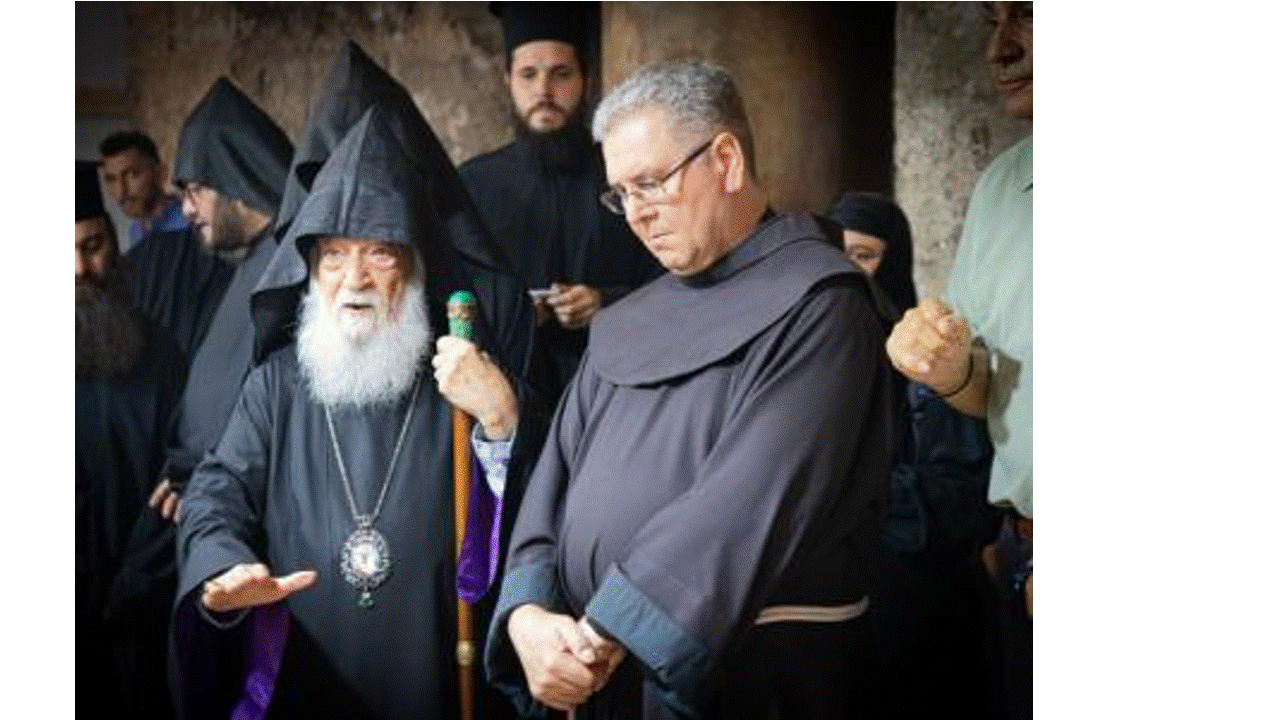Custodia Terrae Sanctae: Franciscan Guardians of the Holy Land
The friars have not only been the “guardians” of the stones and of those places in order to preserve their value, but their mission has also been to make them living stones, so that they speak to the heart and to the mind of all those who set off on a pilgrimage in the Holy Land, to be able to see the “simple stones” as “beloved stones” through their faith.


For over eight centuries, a dedicated group of Franciscan friars has safeguarded the most sacred sites of Christianity. Known as the Custodia Terrae Sanctae, or the Custody of the Holy Land, these Franciscans have served as tireless guardians of the Holy Places, preserving Christian heritage and ministering to the spiritual needs of pilgrims and local Christian communities.
The Franciscan Legacy: A Mission Founded by Saint Francis
The Franciscan presence in the Holy Land dates back to 1217 when Saint Francis of Assisi himself journeyed to the region. Deeply moved by his pilgrimage and driven by a desire to spread the Christian message, Francis established the Franciscan Province of the Holy Land. He met with the Sultan of Egypt, Al-Kamil, in a remarkable gesture of interfaith dialogue, securing limited access for the Franciscans to remain in the Holy Land.
In 1342, Popes Clement VI and Benedict XII issued two papal bulls, Gratias Agimus and Nuper Carissimae, officially appointing the Franciscans as the Custodians of the Holy Places on behalf of the Catholic Church. Since then, their mission has been to preserve, protect, and promote the sacred sites of the life of Jesus Christ.
The Custodian of the Holy Land
The head of the Custody of the Holy Land is known as the Custos. Functioning like a provincial superior of a religious order, the Custos oversees the lives of roughly 300 Franciscan friars living throughout the Middle East in countries including:
Israel
Palestine
Jordan
Lebanon
Cyprus
Syria
Parts of Egypt
Rhodes (Greece)
The friars of the Custody come from diverse backgrounds, representing numerous countries and cultures. Yet, they are united by their commitment to upholding their historic mission within the Holy Land.
Guardians of the Holy Places
The core mission of the Custody of the Holy Land revolves around its stewardship of the most significant shrines of Christianity. These include some of the world's holiest and most visited pilgrimage destinations:
Church of the Holy Sepulchre (Jerusalem): Believed to encompass the sites of both the crucifixion and the tomb of Jesus, the Church of the Holy Sepulchre is one of the most sacred places in Christianity. The Franciscans share custodial duties with the Greek Orthodox, Armenian, and other Christian denominations.
Basilica of the Nativity (Bethlehem): Built over the grotto revered as the birthplace of Jesus Christ, this ancient basilica is another cornerstone of Christianity, drawing pilgrims from all over the world.
Basilica of the Annunciation (Nazareth): Marking the traditional spot where the Archangel Gabriel announced to Mary that she would bear Jesus, this grand basilica is a place of deep spiritual significance.
The friars of the Custody dedicate themselves to the maintenance, restoration, and day-to-day operation of these holy sites and many others throughout the region. Their work ensures pilgrims can have a meaningful spiritual experience when visiting.
More Than Preservation: A Vibrant Spiritual Ministry
Beyond safeguarding physical shrines, the mission of the Custody of the Holy Land extends to serving the spiritual and pastoral needs of people. This service takes numerous forms:
Pilgrim Support: The friars extend a special welcome to pilgrims from all over the world, offering guidance, spiritual support, and liturgical celebrations. They facilitate access to the Holy Places, enabling pilgrims to deepen their faith through these sacred encounters.
Serving Local Christians: The Custody of the Holy Land plays a vital role in supporting the dwindling Christian communities within the region. They provide pastoral care, establish and run parishes, and offer educational and social services, striving to maintain a living Christian presence in the land where Christianity was born.
Interfaith Dialogue: Inspired by the example of Saint Francis, the friars engage in constructive dialogue with people of other faiths, particularly with Jewish and Muslim communities. They foster mutual understanding and respect, laying the foundation for peacebuilding initiatives within the conflicted region.
The Challenges of the Holy Land
The Custody of the Holy Land operates within the complex and often volatile context of the Middle East. Political tensions, conflict, and economic hardship have a profound impact on the friars' mission and on the Christian population of the region.
https://www.custodia.org/en
Contact Us
Subscribe to our mailing list
Address
St. Anthony Friary
5 Batok Bukit East Avenue 2
659918 - SINGAPORE
Friar in Charge:
Friar Joseph Nasanathan, OFM
email: asia.holyland@gmail.com
